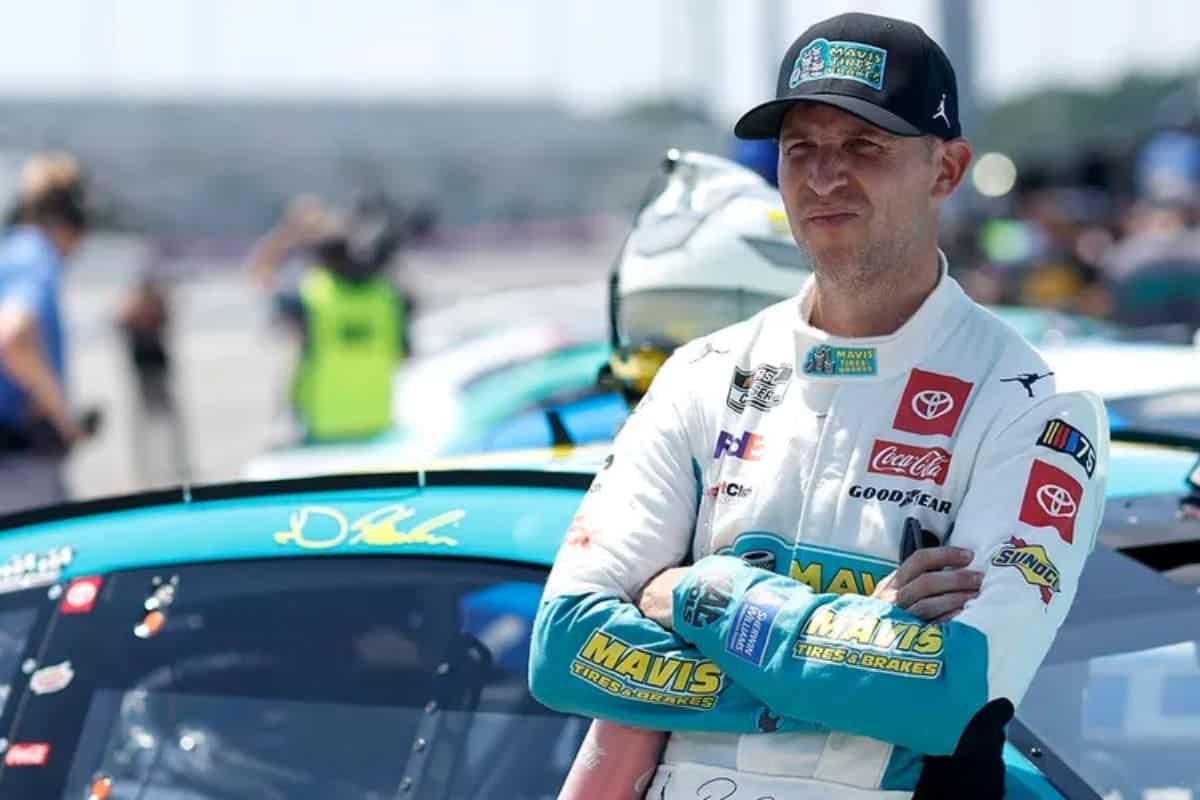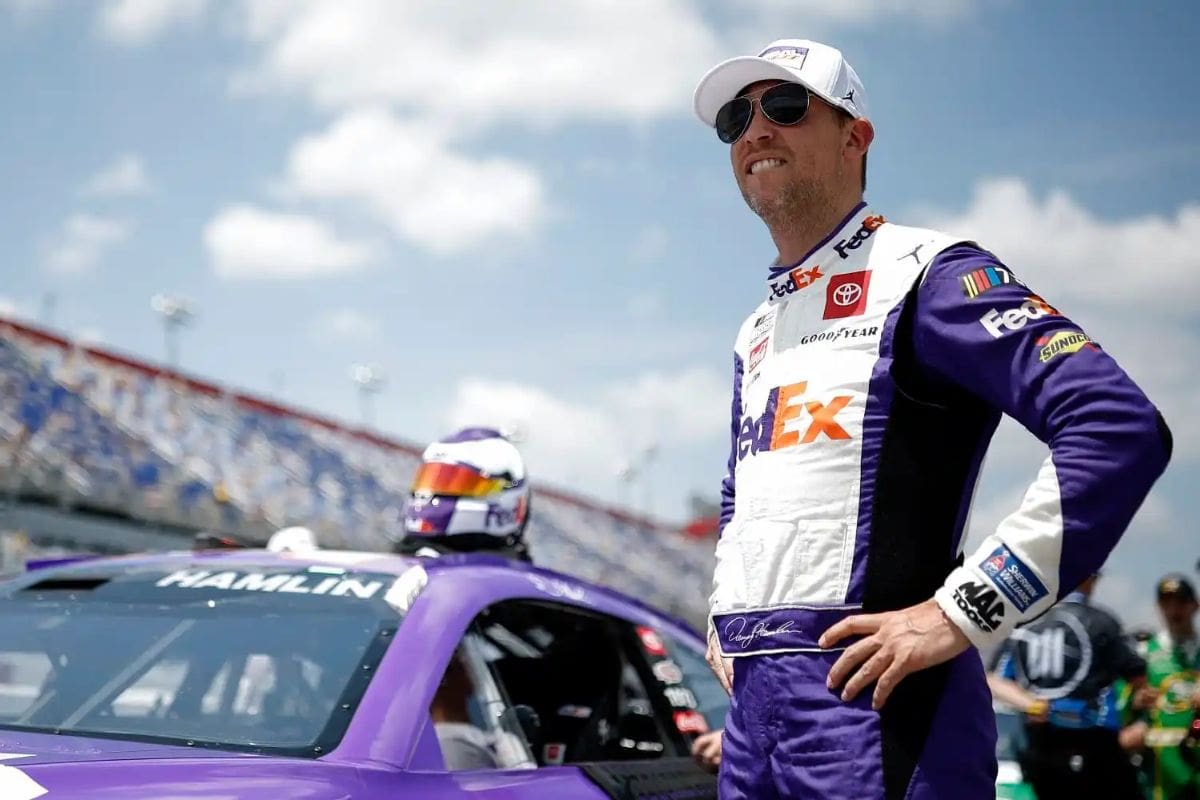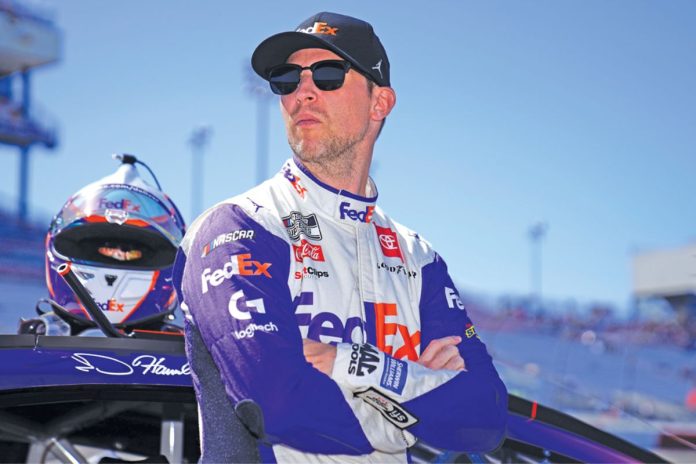Hamlin’s Self-Blame After Texas Race: In the aftermath of the Texas Motor Speedway, Texas event, Denny Hamlin’s honest admission of self-blame for his underperformance against Chase Elliott has caused a sensation in the NASCAR community. This unexpected confession highlights the Hamlin’s introspective qualities and his personal and professional development. How this moment of vulnerability will influence Hamlin’s future strategies and his psychological preparedness for subsequent challenges.
Key Takeaways
- Denny Hamlin attributed his disappointing performance at Texas to strategic errors he made during the race.
- Hamlin’s self-blame highlights his critical self-awareness and readiness to improve.
- His unexpected confession point up the importance of responsibility over blame in competitive racing.
- Hamlin’s remarks add to the ongoing discussion about driver accountability and track conditions.
Intense Battle and Heartbreaking Finish
The showdown at Texas Motor Speedway resulting into a duel between Denny Hamlin and Chase Elliott, showing the intense competition and emotional stakes of the race. Throughout the event, the leadership was passed primarily between teams from Joe Gibbs Racing and Hendrick Motorsports. As race comes to the ending, the focus came to Hamlin and Elliott.
Each driver was acutely aware of the other’s strengths and weaknesses, engaging in a game at over 180 miles per hour. The tension was visible, as each move brought them closer to potential victory or defeat. Elliott’s calm way and accurate driving contrasted with Hamlin’s aggressive strategies, which have characterized his driving style in critical moments.
As they approached the final laps, Elliott’s strategy seemed to focus on saving his vehicle’s performance for the last crucial moments, a reflection of Hendrick Motorsports’ preparation. On the other hand, Hamlin, pushing his car to the limits, determined to use any gap, however minor.

Denny Hamlin’s Disheartening Defeat
Despite leading 37 laps, Denny Hamlin’s hopes for a third seasonal victory were crushed in a second overtime, leading to self-criticism. The No. 11 Toyota, under Hamlin’s control, showcased a strong performance throughout the race, suggesting a potential win that many of his fans and critics alike awaited eagerly. The shift from a potential victory to a defeat in the second overtime not only marked a crucial moment in the race but also set a tone of introspection for Hamlin.
“I think that caution happened, and there were 5 or 6 laps to go, and I’m like, ‘Well, sh*t.’…if he clears me if I have two or three laps, I’ll get back around him. I mean, that’s my irrational confidence, but that’s what I think will happen.”
“When we go under green-white-checkered, it’s all about who clears first…The shift’s not time enough to build momentum back. That’s why my sense of urgency was to…try to keep and stay beside him…Damn it.”-Hamlin
The dynamics of the race were altered dramatically in the overtime phases. For Hamlin, the second overtime became a important decision-making, where every turn and speed adjustment could have led to a different outcome.
| Aspect | Before Overtime | During Overtime | Impact on Hamlin |
|---|---|---|---|
| Lead Laps | 37 | 0 | Lost momentum |
| Strategic Decisions | High | Critical | Missteps |
| Psychological State | Confident | Pressured | Self-doubt |
| Car Performance | Strong | Challenged | Handling issues |
| Race Dynamics | Controlled | Chaotic | Strategy failure |
The shift from control to chaos, especially seen in the ‘Race Dynamics’ and ‘Strategic Decisions’ sections, resulting into in what Hamlin see as a personal defeat.

Hamlin’s Reflection and Self-Blame
Reflecting on the recent race, Denny Hamlin credit his performance primarily to his own strategic missteps rather than external factors. Hamlin, who has otherwise had a commendable season, faced an unexpected setback at Texas. The error, resulting in a spin into the outside wall exiting Turn 4.
“I think we’ve led every race this season, and not like bulls**t-led. So this is a really, really, really, fun year for me so far, because every week. I know I am one of the top three guys on speed, but damn, two weeks in a row of not getting the finish we deserved. This one’s on me for sure.”-Hamlin
Analyzing Hamlin’s race strategy reveals a possible overdone in his way or a misjudgment in tire management. His acknowledgment of these errors suggests a readiness to recalibrate his approach in future races.
Moreover, Hamlin’s recent pattern of being outpaced by Hendrick drivers, especially noted in the Martinsville and Texas races, indicates an area where further strategic adjustments are necessary.
Michael McDowell’s Self-Reflection
Similarly to Denny Hamlin, Michael McDowell also took a moment for honest self-reflection following his performance at the Texas race. While many drivers and fans voiced their frustrations with the track’s condition, McDowell chose a path of introspection, focusing on his own decisions and performance rather than external factors.
- Acknowledgment of Personal Errors:
McDowell openly recognized specific moments during the race where his decisions did not result in the desired outcomes. This admission is critical in a sport where split-second choices can differentiate between a podium finish and a middling performance.
2. Emphasis on Continuous Improvement:
He stressed the importance of learning from each race to refine strategies and enhance his driving technique. McDowell’s focus on improvement highlights his dedication to not just compete, but consistently evolve and adapt in an ever-changing sport.
3. Responsibility Over Blame:
By not attributing his performance issues to the highly criticized track conditions, McDowell shows a mature approach to accountability. This attitude likely fosters a more constructive feedback environment within his team, leading to more focused developmental efforts.
“I’m not mad at the track. It’s my fault that I spun, it’s not the track’s fault,”-McDowell
Track’s Faults Amid Self-Reflection
While self-criticism was prevalent among drivers like McDowell, the problematic conditions of the Texas track were evident in the aftermath of the race. Particularly, the bump-riddled Turn 4 proved especially difficult. Despite his acceptance of personal fault, the track’s deficiencies were impossible to ignore.
The implications of such track conditions extend beyond mere race outcomes; they touch on safety concerns that could hamper the well-being of drivers. Considering the high speeds and competitive nature of races, a single imperfection on the track can lead to significant mishaps, as by McDowell’s crash.
Furthermore, the self-reflection by drivers like McDowell, while commendable for personal growth and skill enhancement, should not overshadow the essential role that track conditions play in the dynamics of racing.

News in Brief: Hamlin’s Self-Blame After Texas Race
The events at Texas Motor Speedway, Denny Hamlin’s honest self-reflection post-race exemplifies a broader ethos within NASCAR of critical self-evaluation and continuous personal improvement.
By publicly acknowledging strategic errors, Hamlin not only enhances his potential for future success but also take accountability and growth that defines motorsports competition.
Also Read: Denny Hamlin’s Texas Crash: Fan Delight


